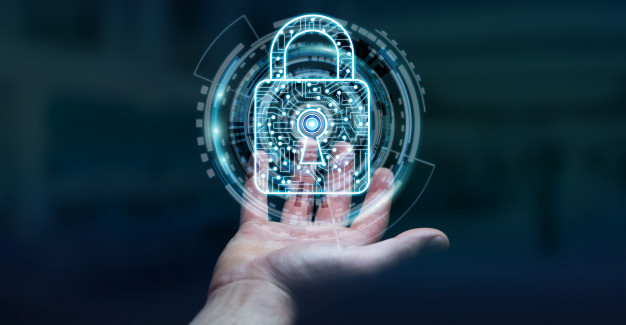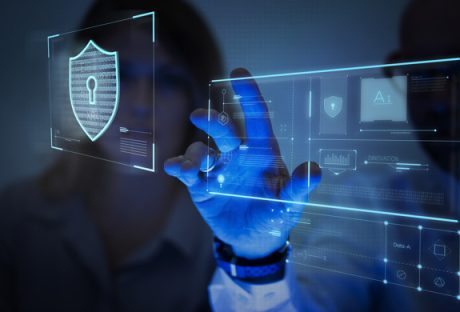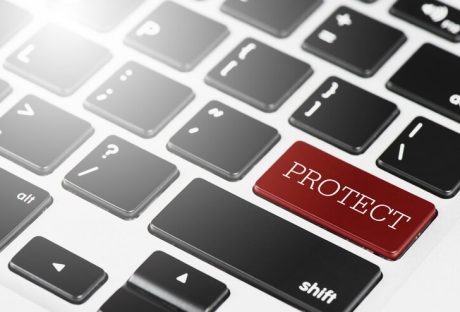If you’re considering investing in Microsoft 365 or need a little more convincing, read through the list of benefits below.
Here, we cover details of Microsoft Office 365 security and compliance, enterprise-level mobility, and powerful solutions that help to optimize productivity – wherever your team is working. To get a clear picture of the benefits of Microsoft 365, we’ve sought the help of IT experts in the know.
Microsoft Office 365 Security Features:

When your employees work remotely, they carry a lot of sensitive data on their laptops and mobile devices. For business owners or managers, you want to rest assured that this data is securely stored while still being easily accessible to your workforce.
The key security features included with Microsoft 365 are:
- Office 365 Advanced Threat Protection
- Azure Information Protection P1
- Intune
- Data Loss Protection
These features protect against external threats such as hackers, phishing emails, and malware and prevent sensitive customer information – email addresses or credit card details – from leaving the organization.
By purchasing all these features in a single package, you will also save a significant sum of money on your monthly subscription.
1. Layered Security Approach:
Microsoft 365 provides three levels of security:
- Threat protection. You will be protected from common external threats, such as spam, phishing emails, and malware, while also receiving cutting-edge defense from more sophisticated threats, such as zero-day ransomware.
- Data leak protection. As previously stated, 365 prevents sensitive data from leaving your system, providing peace of mind to any employer with a remote workforce.
- Control data access. You can customize your level of security regarding sensitive data by applying restrictions such as ‘do not copy’ or ‘do not forward to certain information. You can also remotely wipe data from lost or stolen devices.
2. Seamless Integration & Collaboration
The best feature of Microsoft 365 is always its capability to help users collaborate. It breaks down the silos that different tools work in. Thanks to OneDrive integrating different apps and software under Microsoft 365, users can work together, document process in real-time, and do more.
It allows users to communicate effectively through video, chat, and share files on a single platform. Thanks to this seamless integration, it’s easier for someone to streamline workflow and improve their productivity.
Also, OneDrive and Sharepoint of Microsoft 365 make it easier for users to access data and work information from any device.
The features of Teams make it easier for inter-team collaboration and communication. The efficient features of Outlook Mail, PowerPoint, and Excel Sheets are doubtlessly important in the professional environment.
Also, the Microsoft 365 environment makes it easier for users to remember different apps under the Microsoft 365 umbrella. Every single app has a unique and memorable logo. Also, all the apps are easy to use.
3. Advanced Threat Protection:
If you suffer a malware attack, it could spell the beginning of the end for your business by resulting in lost work hours, loss of income, and an undermining of public trust.
With Microsoft 365, links are checked in real-time to warn you if it will take you to a malicious website. Email attachments are scanned for malware, and your devices are monitored for any suspicious strings of communication that might indicate the beginning of a ransomware attack.
Also, users can secure the flow of emails and mailbox audit logging using Microsoft Defender for Office 365.
All of this means that the future of your business won’t rely on your employees’ ability to spot a suspicious email or attachment before they can click on it. Office 365 has a threat and attack monitoring and prevention response.
4. Data Loss Prevention:
Keeping all the sensitive information, your business holds secure is a difficult task and a constant battle that never goes away.
With 365, you can apply data loss prevention policies to prevent sensitive information from falling into the wrong hands, encrypt devices to protect data if that device is stolen or lost, and manage all your company devices remotely; handy for when an employee leaves, and you need to wipe all company data from their phone and laptop.
5. Control Data Access:
Identity and access management through the MFA and PIM gives Microsoft 365 users peace of mind. Its security features for control and access are unparalleled.
It doesn’t assign the global admin role to everyone. Instead, Contosco creates three different Global Admin accounts using strong passwords. Microsoft Entra Authentication and PIM ( Privileged Identity Protection) are responsible for protecting the accounts.
The Azure Information Protection Feature allows you to manage and control how data is accessed and shared across your business.
You can require your employees and customers to sign in to sensitive information with a fingerprint or PIN and classify that information as ‘sensitive’ to restrict how it is shared both inside and outside the business.
6. Powerful Tools For Enhanced Productivity
The apps and additional tools in the Microsoft 365 ecosystem are efficient and productive. Most apps come with amazing productivity features. Microsoft’s suite of apps includes the best word processors like Microsoft Word, Excel, Outlook, PowerPoint, and other tools with AI features.
The AI-powered Designer under Powerpoint provides you with different design features. You can use Excel Insights to find out patterns in your data. The grammar assists in the writing tool and also helps to write effectively inside words.
Also, the co-authoring features of Microsoft Word allow multiple users to use the same document at the same time. This enables a new gateway for seamless collaboration.
Windows 10:
By upgrading to Microsoft 365, you get the added bonus of standardizing your employee workstations on Windows 10.
Windows 10 is the most secure Windows platform ever, coming with its own range of security innovations that significantly reduce your business’s risk profile, as well as adding cloud-based management to ensure that all your devices are properly configured.
Microsoft and its suite of apps are a vast world, opening a huge world of opportunity for the professional environment. Users find more hidden tricks and techniques as they delve deep into the world of Microsoft 365.
Read Also:






















